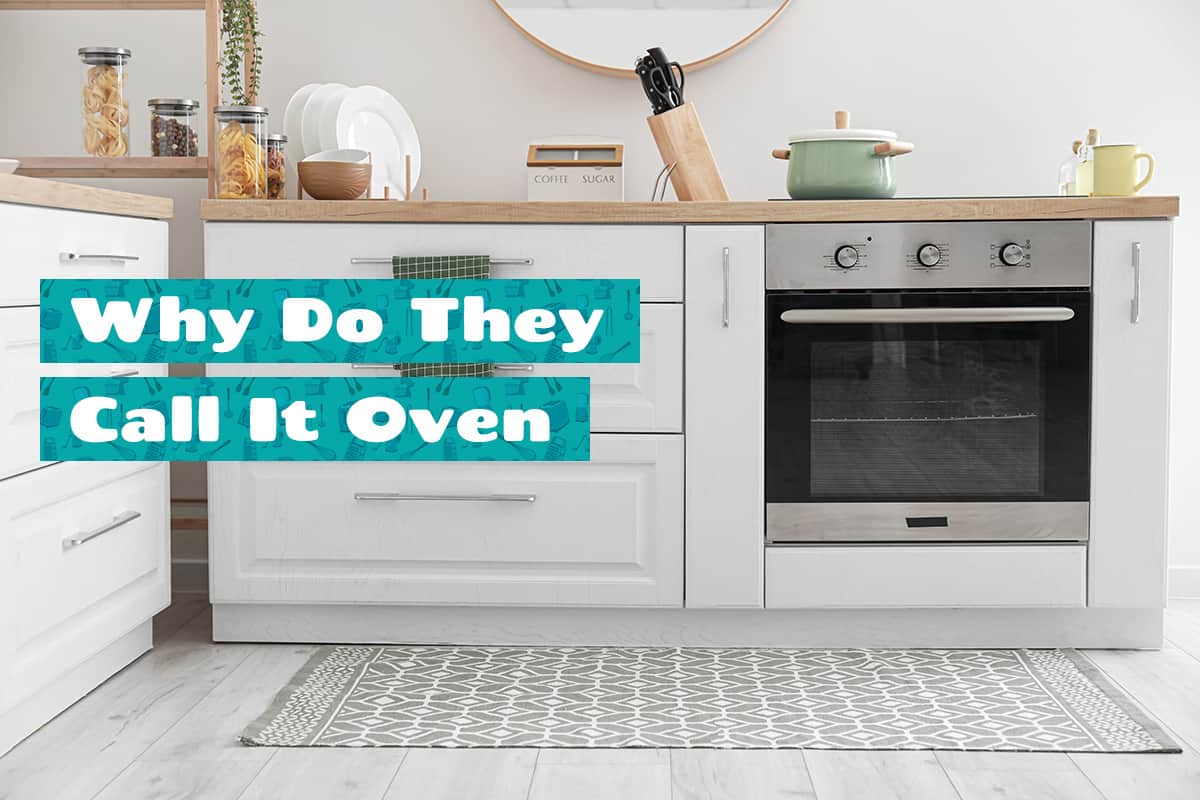Ovens have been a mainstay in our kitchens for as long as we can remember. From baking our favorite treats to roasting holiday feasts, these trusty kitchen appliances have quite the tale behind them. Ever stopped to wonder about the journey they’ve made through history to land in your kitchen?
The term ‘oven’ traces back to Old English. It’s borrowed from the Germanic term ‘ofen’ and relates to the Latin word ‘furnus.’ Essentially, it’s all about a chamber for heat.
In this guide, we’ll dig deep into the captivating history of ovens, their evolution, and their impact on culinary traditions worldwide. Ready for a slice of the oven’s history?
Historical Perspective of Ovens

Have you ever walked into a modern kitchen and been amazed by the shiny ovens? Well, those snazzy cooking devices have quite the backstory. Let’s turn back time and take a look!
Ancient Ovens: The Beginnings
Our oven’s ancestors weren’t as fancy. The earliest ovens were essentially fire pits. Early humans, clever as they were, began digging pits in the ground, adding some wood, and lighting a fire. Voila, a primitive oven! It wasn’t just about warmth; these pits were the first barbecue spots, roasting wild game and fish to perfection.
But humanity is an innovative bunch. Over time, they realized that if they enclosed these pits with clay or mud, they’d trap more heat. And thus, clay ovens were born. Found across ancient civilizations, from Mesopotamia to Indus Valley, these clay contraptions were essential for daily bread (quite literally).
Middle Ages: A Turn in Oven Design
Fast forward to the Middle Ages, and the oven game was changing. Castles and large homes had masonry ovens. Unlike their clay ancestors, these were built above ground using bricks or stones. And, just to add a little medieval drama, most of them had a cool dragon-shaped chimney to let out smoke.
But, it wasn’t all roses. Only the well-off had these fancy ovens in their homes. The common folks had to rely on communal ovens. Picture this: a village sharing one large oven. Everyone brought their dough, and for a small fee, baked their week’s bread. It’s like the medieval version of a pizza party!
The Modern-ish Era
The mid-1700s weren’t just known for Benjamin Franklin and the other Founding Fathers; oven technology was also on the rise. This period saw the advent of the reliable cast-iron stove—sturdy, durable, and chic in a vintage way. They held heat superbly, making them a top choice for bakers and chefs.
The next big “oven-olution” came with the Industrial Revolution. Coal, and then gas and electricity, made their entrance. The coal oven, dark and sooty, was a start. But gas and electric ovens? Now we’re talking. They made oven cooking accessible to everyone, and temperature control was a game-changer. No more playing the guessing game or relying on just the feel of the heat.
The Word ‘Oven’: Why Is It Named So?

Names can be peculiar things, can’t they? Especially when you dig into their origins. But just like people have stories behind their names, our trusty oven has a quirky tale too.
Origins of the Word
Alright, let’s dish out the good stuff. “Oven” didn’t just pop out of thin air. It’s been baking in the language oven (see what we did there?) for centuries. It roots back to Old English, where it was called “ofen.” But wait, the plot thickens. Old English borrowed “ofen” from the Germanic languages, and they weren’t baking in isolation either.
Before Germanic tongues rolled out “ofen,” ancient folks were buzzing about with the Latin term “furnus.” Now, “furnus” might sound like someone’s uncle’s name, but it actually described a chamber for heat. And while we’re chatting Latin, you’ve probably heard of a furnace, right? Yep, “furnus” is the granddaddy of both “oven” and “furnace.” Talk about a family reunion!
Linguistic Evolution
Language is a cheeky monkey; it loves to evolve, twist, and turn. As people migrated, traded, and gossiped, words took on new shades and forms. This is true for our oven story too.
In Middle Dutch, you’d hear folks saying “oven.” Folks in Old High German would call it an “ovan.” For those Norse vikings raiding and trading, they were warming their hands and baking their bread in an “ofn.”
Now, while these words might sound like someone just forgot to spellcheck, they all play a part in the oven’s linguistic journey. They all refer to a structure or chamber where things get heated, be it for metalworking, pottery, or that weekend bread-making spree.
Ovens in Other Languages
Ever played that game where you guess a word’s meaning in another language? Let’s do a rapid-fire round with “oven.”
- Spanish: Horno
- French: Four
- Italian: Forno
- Mandarin: 烤箱 (Kǎoxiāng)
- Hindi: ओवन (Ovan)
While they all sound wildly different, they’re all nodding to the same concept: a cozy, warm place where magic (read: cooking) happens. Whether you’re whipping up a paella, croissant, or pizza, it’s all happening in that universal corner of warmth and deliciousness.
How Ovens Impacted Culinary Traditions

The humble oven isn’t just a box that heats up your frozen pizza on Friday nights. Believe it or not, this kitchen superstar has thrown its weight around in culinary circles for ages, spinning out traditions and tasty treats.
Rise of the Bakeries
Long before Instagram made baking a trend, ovens were setting the stage. With the advent of brick and clay ovens, communities saw the rise of the bakery. Instead of everyone baking at home, specialized bakers popped up, churning out bread, pies, and other goodies. Neighborhoods got their daily dose of fresh bread, and bakers got street cred.
These bakers weren’t just about bread. They got creative, crafting pastries and desserts. Think about it: no ovens, no croissants. What a sad world that would be!
Food Preservation: The Oven’s Role
Before we had fridges blasting cool air, people had to be crafty with food storage. Enter the oven. With its consistent heat, ovens were stellar for drying fruits, veggies, and meats. This wasn’t just about having snacks for later; it was survival. Dried foods lasted longer, making sure folks had grub during lean times.
Pizzas, Roasts, and Everything In-Between
Here’s the cheesy bit. Ovens and pizzas? Total BFFs. Without ovens, Naples would’ve never given us the pizza. And from Naples, this flatbread with toppings took the world by storm.
But let’s not stop at pizza. Think about Thanksgiving. Without the oven, that golden-brown turkey would be missing from the dinner table. Roasts, be it meat or veggie, owe their mouth-watering perfection to the controlled heat of the oven.
Oven’s Global Passport
Ovens aren’t just about Western goodies. They’ve been spicing things up globally. In India, the tandoor oven gave birth to the scrumptious naan bread. Middle Eastern flavors shine with dishes like shawarma, cooked in upright ovens. China’s mooncakes, central to the Mid-Autumn Festival, owe their existence to ovens.
It’s a global oven party, with each culture throwing in its unique recipe, showcasing the versatility of this kitchen marvel.
Specialized Ovens for Specialized Dishes
Different culinary needs led to oven innovations. The pizza oven, with its super-high heat, ensures a crispy crust and gooey cheese. Smokers, a variant of traditional ovens, impart that unique smokey flavor to meats.
Ever heard of claypot chicken rice? It’s a delightful dish from Malaysia and needs, you guessed it, a claypot oven. Specialized ovens led to specialized dishes, expanding our palate and culinary repertoire.
The Oven’s Impact on Modern Cooking
Today’s ovens are about precision, convenience, and broadening home-cooking horizons. Without precise oven temps, making soufflés is a no-go. Modern ovens, with their temp controls, timers, and fancy features, empower even the most amateur chefs to dish out gourmet meals.






